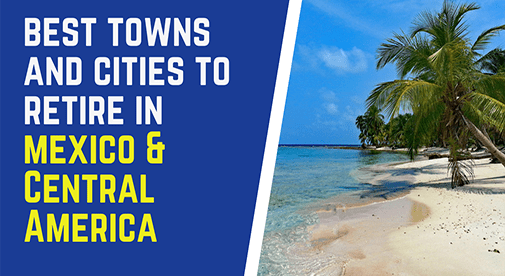Central America and Mexico are popular choices for retirement for many Americans and Canadians. This is not surprising when you consider the great qualities the region has to offer. First off there are the practical aspects, such as its proximity to the U.S. and Canada, and its similar range of time zones. Nowhere else in the world can North American expats enjoy their retirement overseas and still have the option of visiting their families within the space of two hours. This close proximity works both ways too, meaning that expats in Mexico and Central America are regularly entertaining guests from back home.
Expats are also drawn by the relaxed lifestyle that is inherent throughout Mexico and Central America—a far cry from the hectic rat race that many expats experience in their working lives. On top of this, the region offers some of the most breathtaking natural beauty and scenery that the world has to offer—which is, of course, easier to enjoy when you combine it with the aforementioned relaxed lifestyle.
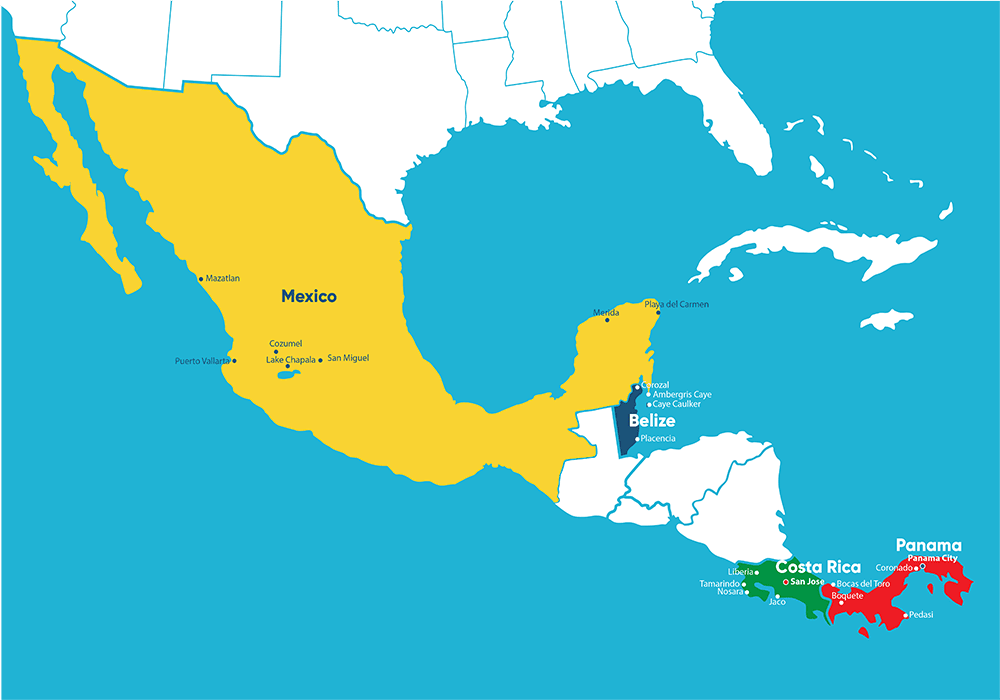
And last, but certainly not least, most expats who live here are drawn by the undisputable low cost of living throughout the countries in this region. Many find that, while the prospect of retiring in their home country might mean living frugally and counting every nickel and dime, they can enjoy a higher quality of life at a lower cost in Mexico and Central America.
If a laidback and affordable retirement close to home is something that you think might be right for you, why not have a look at the map below. We’ve picked out some of our favorite retirement destinations in Mexico and Central America, all of which allow you to live out your dream retirement at a low price.
Mexico
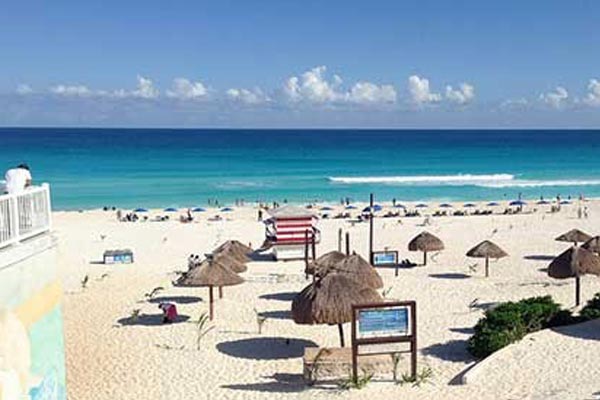
Just across the border from the U.S., Mexico is now “closer than ever”—that’s a motto used by the Mexican Tourism Association—and as many expats are choosing to live in Mexico, we couldn’t agree more.
Mexico is the United States’ closest neighbor to the south, and at no other time in the long history of that relationship have the benefits of living and investing in Mexico been more apparent…and easier to take advantage of. Not just for U.S. citizens, but for Canadians, Europeans, South Americans…anyone looking for great weather, low prices, rich culture, and potential profits.
Think of it…moonlit fiestas, strolling mariachis, languid white-sand beaches, colonial towns set in the rugged Sierras, ancient Maya pyramids rising from the misty Yucatan jungle…Mexico has it all: rich culture, perfect climate, affordable living, not to mention mountains, beaches, deserts, and just about everything in between.
Wherever you go in Mexico, the people will charm you, the natural beauty will seduce you, and the remarkably affordable cost of living will entice you to stay.
A couple can live comfortably in Mexico on $1,865 per month.
Puerto Vallarta
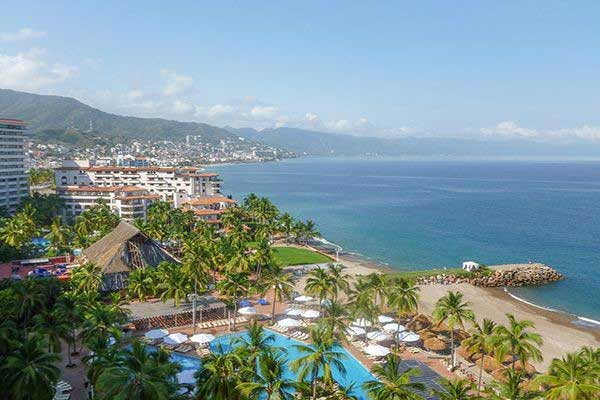
Puerto Vallarta has been an expat haven for over 70 years. During its early years, the city’s main business was exporting agricultural products grown in the rich farmlands of the state of Jalisco and the surrounding area. Today Puerto Vallarta has become one of Mexico’s biggest tourist destinations, a city that draws property shoppers, fun-seekers, and investors.
Puerto Vallarta has a vibrant culture that will stimulate your senses. You can hear and smell the food sizzling from local food vendors…feel the smooth texture of the multicolored bead arrangements sold by the Huichol people from the western Sierra Madres…see the 11 majestic sculptures from all across the world poised on a mile-and-a-half stretch along the malecón. The bronzed sculptures, contrasting with the soft powder-blue of the ocean, are a must-see for art lovers.
Cozumel
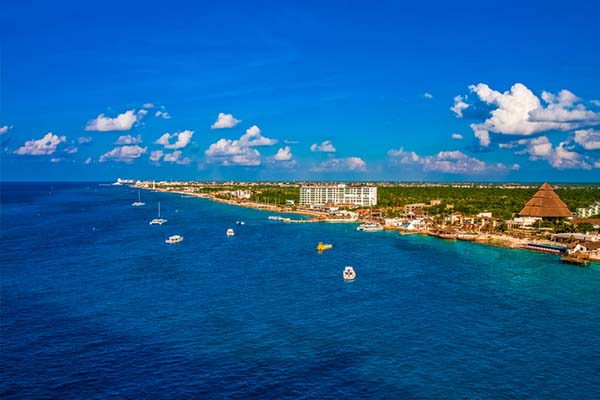
Just 12 miles off the coast of Playa del Carmen, along Mexico’s famed Riviera Maya, Cozumel is a well-established, world class vacation destination. Especially known for its warm, tropical water, snorkelers and scuba divers from across the globe enjoy exploring the island’s reef, teeming with aquatic life.
Average temperatures in the 80s F make for comfortable weather with breezes off the Caribbean providing some cool air during the hottest months—when temperatures can climb into the 90s F.
San Miguel de Allende
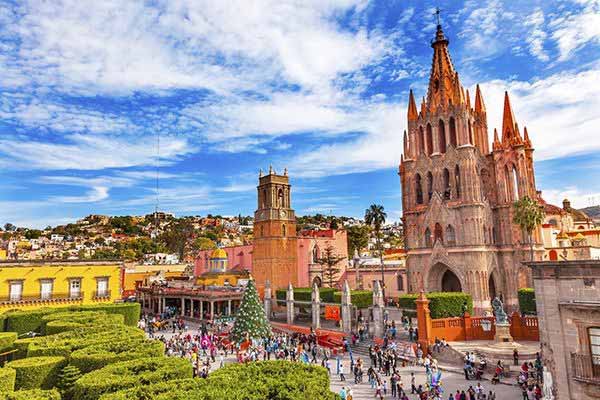
One of the Mexico’s hidden charms can be found in its interior, about four-hour’s drive northwest of the capital, Mexico City. The town is called San Miguel de Allende, and it’s located in the Colonial Highlands region. It offers a lot of benefits: temperate climate, low cost of living, an active expat community, welcoming locals, charming local cultural traditions, and a focus on the arts.
The setting is beautiful. Its colonial centro is a UNESCO World Heritage site. So it is mandated that homes, churches, civic structures, businesses…just about every original structure…retain its historic, original appearance.
Playa del Carmen
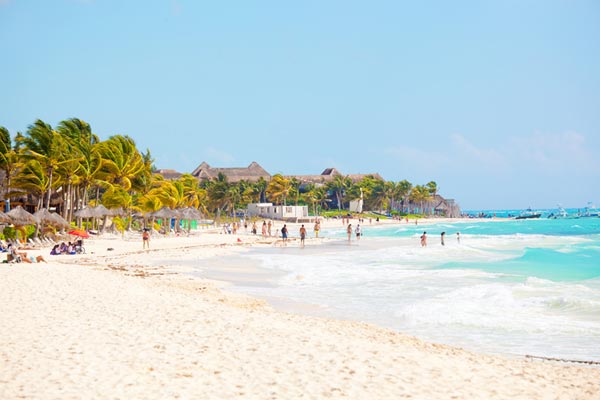
Once a small, non-descript fishing village along Mexico’s Caribbean coast, Playa del Carmen began its new and improved life as a major tourist destination back in the 70s.
Bathed by the warm waters of the Caribbean Sea, along Mexico’s Yucatan Peninsula, Playa del Carmen deserves its reputation as a popular vacation destination and growing expat stronghold. As the midway point between Cancún on the north end of the Riviera Maya, and Tulúm on the south, Playa del Carmen shares the same clear, tropical waters, palm-studded white sand, and favorable climate that draws some 5 million tourists to this area, each year.
Mazatlán
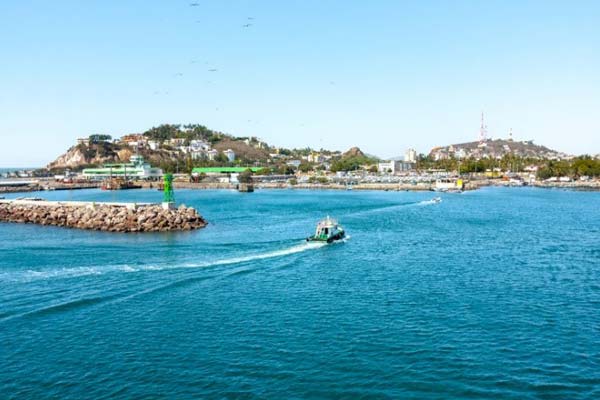
©iStock.com/DarienP
With a long history of welcoming immigrants, this mid-size city on Mexico’s west coast offers visitors more than the standard “golden trio” of great weather, reasonable prices, and a stunningly beautiful location. Mazatlán is one of Mexico’s few colonial towns actually on the coast, with miles of beautiful beaches, a thriving year-round cultural scene, fantastic fresh seafood, and a friendly community of local people and expats.
Recent renovations of the city have made it even more attractive, with two elegant oceanfront parks, a completely re-done Centro Historico, an easier-to-navigate path and glass-floored lookout at El Faro (the highest lighthouse in the world), and a beautified malecon, the 12-mile boardwalk along the glittering Pacific Ocean that now features Mazatlán’s first bicycle path.
Merida
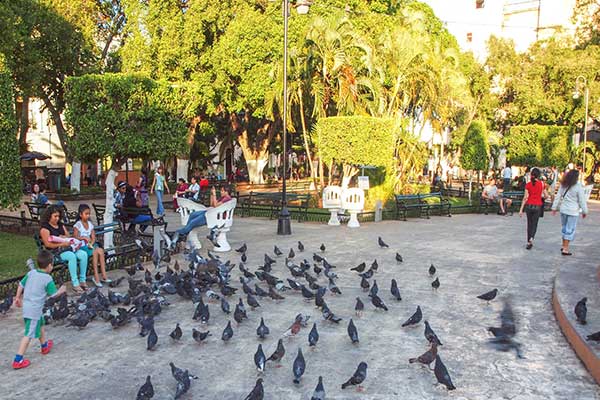
Near the northern coast of Mexico’s Yucatan Peninsula, about 22 miles south of the Gulf of Mexico, lies the regal colonial city of Merida. This beautiful, vibrant city of some one million people offers culture, sports, modern infrastructure, world-class affordable medical care, and handy access to the Gulf of Mexico. It’s easy to understand why Merida has long been a favorite of expats. It is also among the most historically significant cities in all of Mexico.
Capital of the state of Yucatan, Merida’s ancient roots go back to, what was formerly, the Maya city of Tho´, also known as Ichkaanziho´. And it is Merida’s rich history and current indigenous influences, mixed with a modern lifestyle, up-to-date infrastructure, and a reduced cost of living that has attracted large numbers of expats.
Lake Chapala

Lake Chapala is Mexico’s largest lake, and the surrounding area is also home to the largest concentration of expats in the world. Located in west-central Mexico, about an hour south of Guadalajara, the Lake Chapala region sustains approximately 20,000 expats, most from the U.S. and Canada, and the vast majority are retired. That number roughly doubles during the cold Canadian winter months, when thousands more migrate to the area for about six months each year.
Two quaint towns, Chapala and Ajijic (ah-hee-heek) support most of the expat population, with Ajijic holding the edge when it comes to numbers. Both communities are nestled along the lake’s shoreline and separated by only a few miles.
Costa Rica

Costa Rica’s fame as a top retiree destination is richly deserved. You’ll find the tropics along the Pacific and Caribbean Coasts, while most of the Central Valley is cool and breezy. If you find it difficult to choose which climate you prefer, you will be glad to know that the mild temperatures of the Central Valley are just two hours by car from the tropical beaches of the Pacific Coast.
Expats are attracted to Costa Rica for numerous reasons, which include the low cost of living, excellent healthcare, a modern telecommunications structure, beautiful beaches, rainforests, lush valleys, and cool mountains…not to mention the theaters, art galleries, and fine dining. There are more than 20,000 expats living in Costa Rica and many well-established expat communities.
In Costa Rica, the good life is called “pura vida.” For those who retire in Costa Rica, pura vida is a daily fact of life in this beautiful, exotic, and surprisingly affordable country.
A couple can live on $2,000 per month (or less) and live even better on $2,500 to $3,000.
Tamarindo
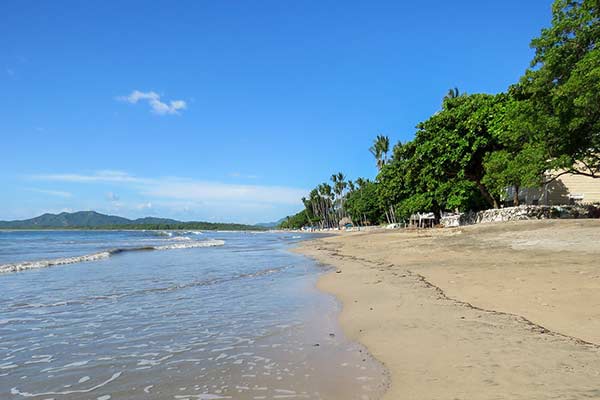
Originally a tiny surfing town, Tamarindo now has the reputation of being one of the most developed on the North Pacific Coast, but it still has lots of rugged charm, as well as luxury houses, restaurants with cuisines from around the world, casual beach bars, sophisticated nightlife, and a choice of 18-hole golf courses 20 minutes to the south or north. There’s also terrific fishing and surfing. Tamarindo is close to protected green areas and several national parks.
In Tamarindo, everybody seems to know everybody. Long-term expats number in the high hundreds. So, it is a terrific place to land if you are looking for a strong expat community conducting classes, events, fundraisers, and more. It’s completely walkable, which makes it ideal if you do not want to own a car. Main Street (it does have a name, Calle Principal, which means “Main Street,” but no one knows it!) is lined with shops, cafés, and restaurants run by Costa Ricans, Israelis, Argentinians, Italians, North Americans, and people of a dozen other nationalities. It is not unusual to hear five different languages on any given day. It feels like you are on vacation every day—even if you live here!
San José
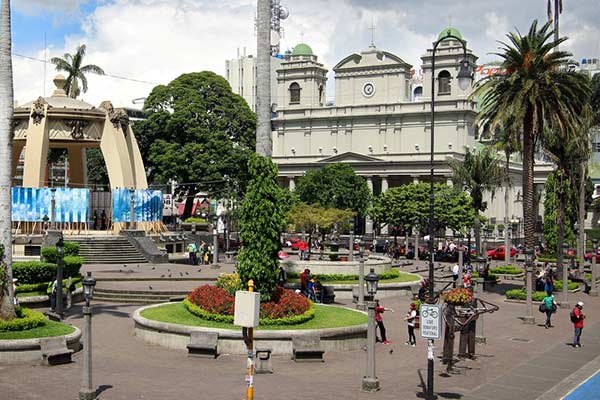
Until 1824, San José was an insignificant village. But in that year the country’s first elected head of state decided to move the government from the colonial capital of Cartago to San José. San José is an administrative and business center, and the traffic and crowds can be exasperating, but there is always something happening, especially around the Mercado Central, the city’s old central market, the Avenida Central, the main pedestrian shopping zone, and La Sabana, the city’s large central park.
Much of the downtown area is still uninviting, but outlying areas are attracting more and more expats. Some are business people whose companies are located in the city, but others are interested in the city’s cultural attractions, its excellent restaurants, and a wide variety of shops. Just to the west of the city center are the Rohrmoser, Pavas, and Sabana neighborhoods. Embassies of several countries, including the U.S., are located in this area, as are shopping centers, gated communities, international schools, and other services.
Liberia

Decades ago Liberia, Costa Rica did not show up on tourist radars, however, with the region’s fast-paced growth and a booming international airport, times are changing. Liberia is the largest city of Guanacaste province, located northwest of the capital city, San José, a four-hour drive away. Liberia has been nicknamed La Ciudad Blanca (the white city) because of the white gravel that was once used to “pave” the city’s streets and for the whitewashed colonial houses from a bygone era.
Liberia’s bustling downtown features a modern Catholic church, a big plaza, and a park surrounded by small shops and restaurants. Central Park is a popular gathering spot for locals and often hosts live music on weekends. Vendors sell refreshing pipas (coconuts) from a pushcart, and park benches offer shade on the great number of hot sunny days that Guanacaste is famous for.
Nosara
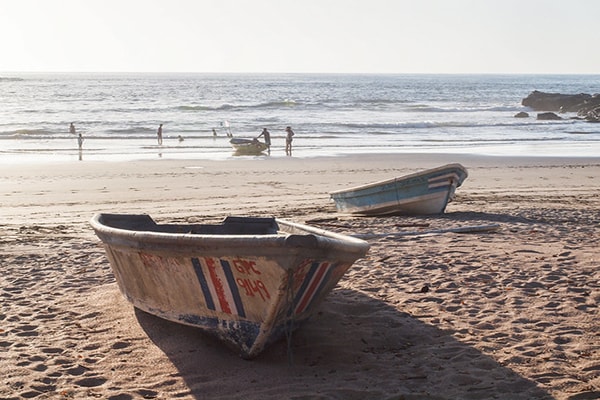
Nosara is a haven for surfers, yoga enthusiasts, and practitioners of alternative health and wellness of dozens of nationalities. The original fishing village has been surrounded by modern development, including shops, boutiques, homes from luxury to basic, and restaurants tucked away in the forest that blankets the area, although it remains low-key. There are no large hotels or resorts or tall condo towers here. In fact, building along much of the shore is not allowed due to a large wildlife refuge that protects nesting sea turtles. The arrival of thousands of sea turtles laying their eggs on the community’s beaches is a big tourist draw.
The main beaches in the area include Playa Guiones, a surfer’s paradise, and Playa Pelada, a scenic family beach. Playa Ostional further to the north is the main nesting beach for the endangered Olive Ridley sea turtles, and is protected in the Ostional National Reserve. Most of the expat communities, homes, and developments are in Guiones and Pelada.
Jacó
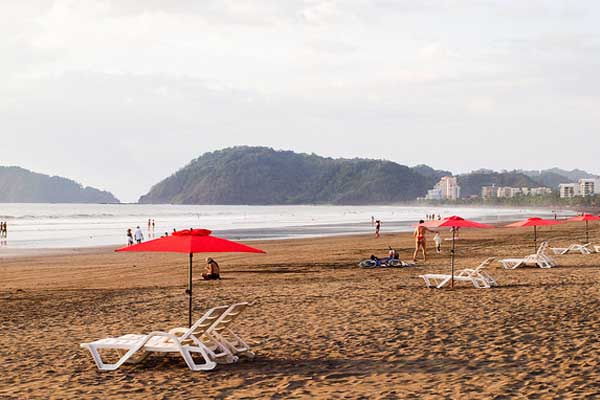
Located on the Central Pacific coast of Costa Rica in the Puntarenas province, Jacó town (greater area population 10,000) is filled with activities for everyone. Less than a 1.5-hour drive from San Jose, Jacó boasts the title of closest beach to the capital city. With this desirable proximity, it is no wonder it is the hotspot for city dwellers to enjoy a tropical beach weekend.
The surrounding area of Jacó possesses all the North American products and services required to live comfortably, such as medical clinics, major grocery stores, mechanics, pharmacies, clothing stores etc.
Belize
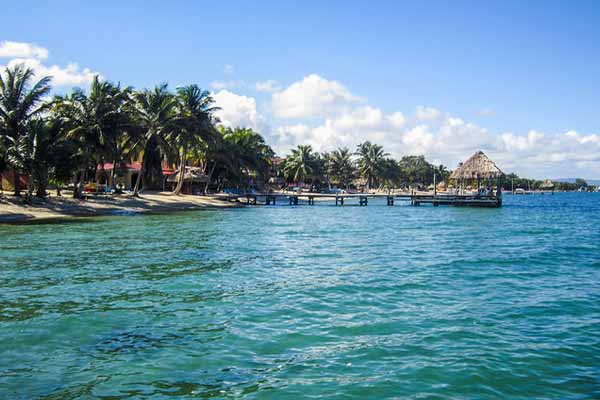
With a population of 330,000, English-speaking Belize offers plenty of empty, wide-open spaces. Located below Mexico’s Yucatan peninsula, this is the picture-postcard Caribbean. It’s a country of Maya temples, seaside condos, jungle lodges, and colonial mansions. Belize offers economic stability, ease of living, and a cost of living that is good value when you compare it with that of other Caribbean retreats.
Also, Belize’s retiree program offers attractive incentives to foreigners looking to live there.
To top it all off, Belize is just plain beautiful. From its Caribbean shores to its jungle interior, this nation has great natural beauty—blue water and deserted beaches, and inland retreats where jaguars and scarlet macaws still live in their natural habitats. It’s a country where you can explore and develop, and there’s room to breathe, with a pervasive, heady sense that almost anything goes.
Your monthly budget will obviously depend on where you live and how you spend your money. If you live in San Pedro or Placencia and dine out often at fancy restaurants, $3,000 a month may be enough. But if you spend your leisure time sailing and fishing in Corozal, a monthly budget of $1,400 to $2,000 is very reasonable.
Corozal

Corozal is continuing to gain popularity among expats and native Belizeans. An active community of expats live full-time in the Corozal District, with the numbers swelling during the winter months. In fact, it may be the most popular destination in Belize for expats who plan to retire and live frugally on their retirement pensions or savings. Costs here are low and amenities are plentiful.
The city and surrounding area have many visible links with the past. Corozal Town was built on the foundations of a Maya ceremonial center (now called Santa Rita), and many of the town’s old buildings are constructed of stones pillaged from the ruins of Santa Rita. Corozal also has a pretty main square and, thanks to its proximity to Mexico, feels a bit more Latin than some other parts of Belize. One big draw is the town’s location on the Bay of Chetumal, which locals usually refer to as Corozal Bay. Water in the bay tends to be a darker green than the turquoise of the Caribbean. There’s also a green parkland along the bay-front (malecón), with plenty of beautiful water views.
Corozal offers a Belizean island lifestyle, full of beauty, charm and ambience, making it an exciting prospect for expats and visitors alike.
Ambergris Caye
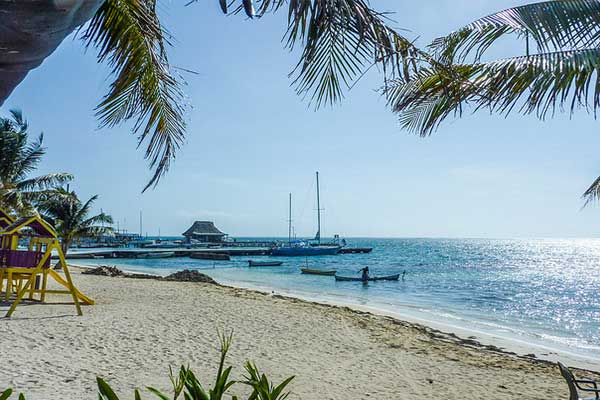
Ambergris Caye is the most frequently visited area of Belize. Tourists and expats alike flock to this lively Caribbean island for the quintessential turquoise seascapes, diverse outdoor activities, nightlife options, and active social life. In 2013 and 2014 Ambergris Caye won back-to-back Trip Advisor members awards as the “best island” in the world to visit. As a result, an increasing number of tourists have been visiting the island, while more and more expats are choosing to retire here.
Given that everything must be transported to the island, and that this is the country’s main tourism center, the cost of living is higher on the island than in most other districts of Belize. The benefit of living on Ambergris Caye is that you’ll find more activities, amenities, and luxuries available on this little island than anywhere else in the country.
Caye Caulker
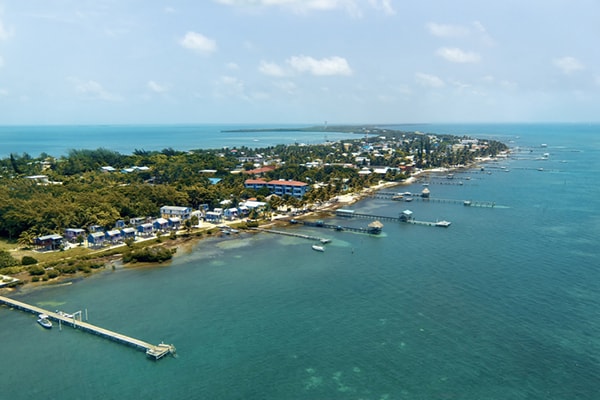
Caye Caulker, a five-mile-long island off the coast of mainland Belize, is a charming Caribbean island where “go slow” is the motto. This island is known for its stunning seascapes, diverse water sports, eco-tours, and friendly community. The streets are still composed of packed sand, and you won’t need to dodge traffic here. You’ll see a few golf carts, but no cars or trucks.
This charming island is graced with pastel-colored B&Bs, bars, and cafés. The lifestyle is laidback and low key. It’s a perfect spot for those who wish to live on the Caribbean Sea, surrounded by nature. Artists and writers, who seek creative inspiration, will find plenty here, given the spectacular natural environment.
On top of everything else, Caye Caulker is best known for its quality snorkeling, fishing, and water sports. Thanks to the offshore barrier reef and the wealth of tropical fish, there’s always something to marvel at when exploring the underwater environment. While simply walking along the easterly beach path, lush with leafy sea grape, sea almond, and palm trees, you’ll be delighted by colorful kites billowing above the sea, tethered to avid kite surfers bouncing along the sea’s sparkling surface. This is beach living at its very best.
Placencia

Placencia is a charming little seaside town found at the tip of a peninsula off the coast of mainland Belize. It’s fast becoming Belize‘s most desirable location as it fronts the gorgeous Caribbean Sea to the east and a resplendent freshwater lagoon, full of wildlife and with a view of the gorgeous Maya mountain chain, to the west.
The Placencia Peninsula, a 16-mile spit of land that parallels the mainland, offers scenery of vivid blue waters and pure white sandy beaches. This one time fishing village offers excellent fishing as well as diving, snorkeling, and boating. Pristine sailboats glide through the turquoise waters alongside local fishing boats. Fresh seafood is available year-round, as are healthy fruits and vegetables…
Panama
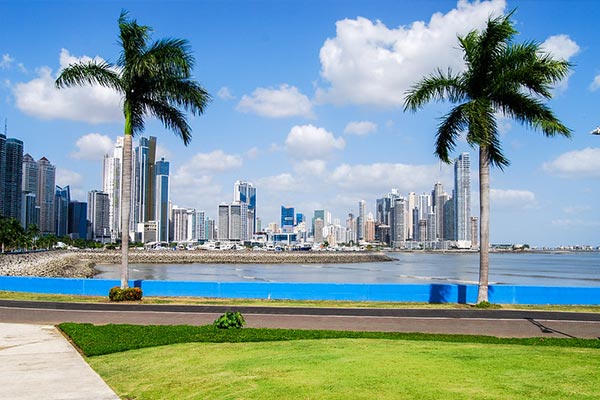
Panama has been one of our favorite locations for overseas investment and retirement for many years. The country’s popularity has much to do with its modern infrastructure, proximity to the U.S., and mild climate. And then there’s the unparalleled Pensionado program that offers residence plus special benefits to pensioner expats from North America and beyond.
Many of the expats here cite Panama’s geographical diversity and location, with proximity to North America being a major factor in them choosing Panama for their retirement destination. In a country roughly the size of South Carolina, you’ll find mountains and beaches within an easy striking distance—no matter where in the country you are. Wake up on the Caribbean and have lunch overlooking the Pacific…they’re a couple of hours apart at the isthmus’ “skinniest” sections. There truly is something for everyone in Panama…
No matter what your taste or budget, you’ll find plenty of quality options, but a couple can live comfortably on $1,782 to $2,900 per month.
Bocas del Toro
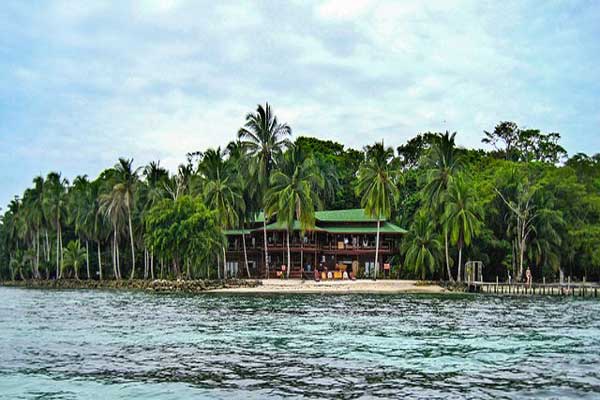
The part-island province of Bocas del Toro is on Panama’s Caribbean Coast, about as far as you can get (about 300 miles northwest) from Panama City. Off the mainland coast, more than 100 islands form the Bocas del Toro archipelago. The hub is Isla Colón, site of Bocas del Toro town, the provincial capital. To distinguish the town from the province, many locals refer to the former as “Bocas Town.”
The first thing you’ll notice about Bocas is its unique cultural diversity. The indigenous tribes who reside here govern part of the province that has been set aside as reserve land. And the people of Bocas Town—the Bocatoreños—are primarily of African descent. Their ancestors may have hailed from Jamaica, Barbados, or Trinidad and Tobago…or from African slaves brought here during colonial times.
Expats living here tend to be very involved in island life. Some have started businesses, helping fuel the island economy. Others enjoy teaching local students, and still others find time to volunteer for important causes or charities.
Panama City
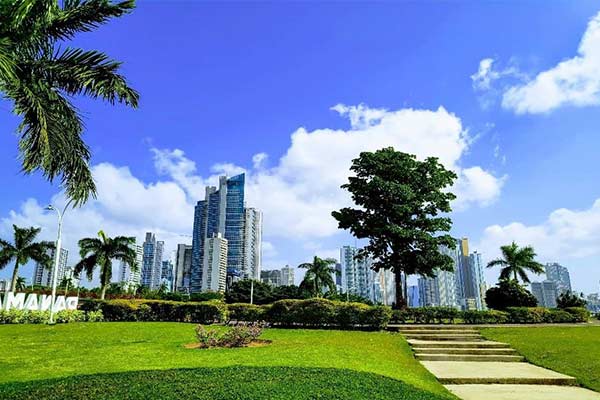
As Central America’s true First-World capital, Panama City offers a high-value combination of benefits you won’t find anywhere else in the region. And whether you’re seeking a luxury lifestyle or plan to live like a local, you’re likely to live more comfortably and save more easily than you did back home.
Here you can dine in gourmet restaurants that wouldn’t be out of place in cities like New York or Barcelona (and, in fact, many of the chefs working in Panama today have trained in world-famous culinary capitals). You can attend movies and plays in Spanish or in English, patronize the arts, and attend world-class symphonies, opera, and the ballet.
Coronado
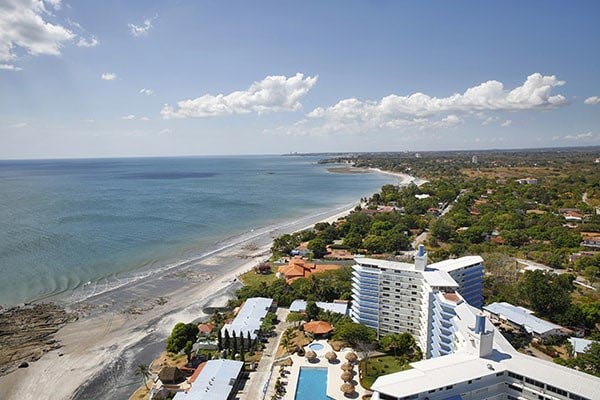
Coronado is one of the more developed beach resorts along the Pacific coast. It caters for most First World needs and those living here can still enjoy many—if not all—the conveniences of life back home…except at a reduced price.
Often regarded as the epicentre of beach life in Panama, property here is affordable and infrastructure is already in place. It has the Pacific Ocean on its doorstep, clean white beaches, malls, extensive 24-hour supermarkets selling all of what you love back home…golfing, a growing expat community, and business ventures if you want an active retirement in Coronado.
Boquete
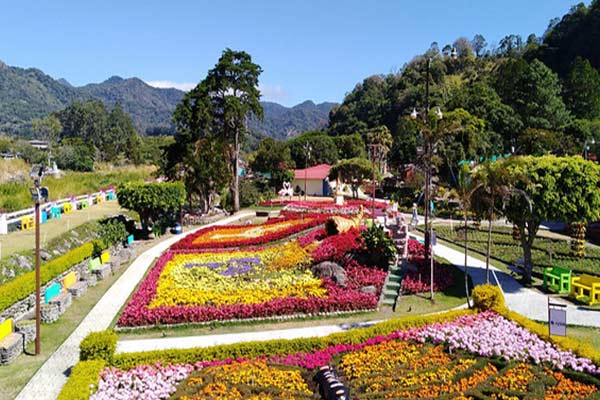
Boquete (pronounced bow-keh-tay) is located at the base of Panama’s tallest peak, Volcán Barú, and the Caldera River rushes through the middle of town. Lush, green hills, flowing rivers, and spectacular waterfalls help to make this one of the most unspoiled retirement retreats in the world today.
Although banana, mango, and palm trees abound, this is coffee country. During the harvest season, the indigenous people come down from the hills to gather the precious “cherries” from the fields. The climate afforded by the altitude here is hard to beat. Due to the elevation, daytime temperatures are generally in the 70s to low 80s F, and nights are even cooler. The spring weather makes Boquete ideal for full-time residents and snowbirds alike. And the frequent misty rain keeps everything green so you can grow just about anything.
Pedasi
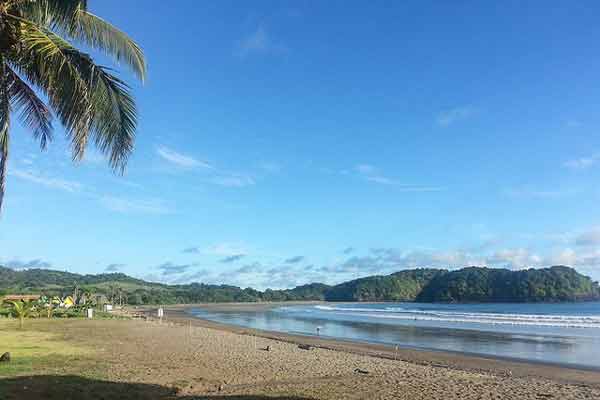
Pedasí is a sleepy kind of town. It consists of a main road, a central park, and several blocks of residences and businesses. It’s primarily a fishing village but has seen an upsurge in outside interest in recent years, resulting in a small but growing expat community.
Located on the Azuero peninsula on Panama’s Pacific coast, Pedasí is a place for ocean lovers. Most days, there are few if any people on the sands, so you have great stretches to yourself. It feels private and exclusive…and yet costs here are low compared to similar destinations in the U.S.
And it’s not just the low costs and great beaches that are attracting expats to this often over-looked part of Panama. The weather is also a big draw. Most days of the year are sunny. Average daytime temperatures are around 88 F, but evenings and mornings can be 10 to 15 degrees cooler, thanks to the ocean breezes.
Click here to return to Home Page for The World’s Best Towns and Cities For Retirement, or click on the Previous or Next buttons below to explore more regions…

Get Your Free Report on the World’s Best Places to Retire:
Learn more about the best places in the world to retire in our daily postcard e-letter.
Simply enter your email address below to sign up for our free daily postcards and we’ll also send you a FREE report on The World’s Top 10 Retirement Havens, plus access to over 10 more free reports. Our gift to you, on our favorite destinations.

